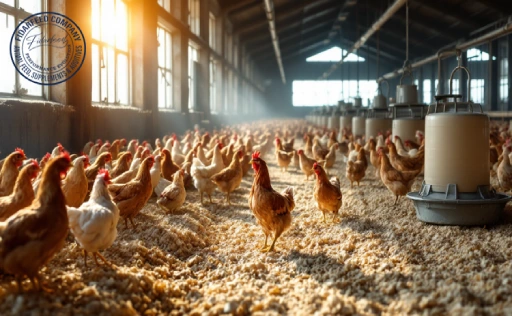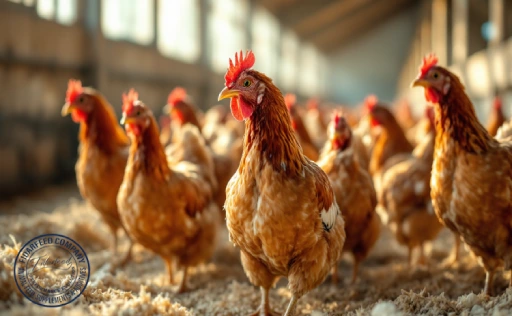How to Treat Bovine Respiratory Disease: Why Every Cattle Farmer Should Care
How to treat Bovine Respiratory Disease (BRD) is a question that touches every cattle farmer at some point. BRD is one of the most economically damaging diseases in the cattle industry. It doesn’t just affect individual animals—it affects productivity, weight gain, feed efficiency, and overall herd health. The urgency to treat BRD is real: a single misstep can lead to widespread infection, reduced profits, or even death within your herd. Whether you’re raising feeder calves or maintaining a breeding operation, understanding how to treat and manage BRD is vital for your success.
Spotting the Signs Early: Recognizing Bovine Respiratory Disease Before It Gets Worse
Early detection is half the battle when it comes to BRD. Be on the lookout for symptoms such as labored breathing, nasal discharge, droopy ears, coughing, and lethargy.
Learn more about: Probiotic Supplement for Livestock
Some cattle may also isolate themselves or refuse feed. Novice and experienced breeders alike should understand that these symptoms can be subtle at first. Regular observation and knowing what “normal” looks like in your herd is essential. By the time fever and rapid weight loss set in, the disease is already advanced—so catch it early.
What Causes Bovine Respiratory Disease? A Look at the Triggers and Risk Factors
BRD is a complex disease often triggered by a combination of stressors and pathogens. Common viral culprits include Infectious Bovine Rhinotracheitis (IBR), Bovine Viral Diarrhea (BVD), and Parainfluenza-3 (PI3).
Learn more about: Discover Zeolite Benefits for Health in modern animal breeding: From Cattle to Fish
Bacterial agents like Mannheimia haemolytica and Pasteurella multocida often follow these viruses, creating a severe secondary infection. Environmental factors such as weaning, transport (“shipping fever”), overcrowding, or sudden weather changes further compromise immune function, increasing BRD risk.
How to Treat Bovine Respiratory Disease with the Right Medications
Once diagnosed, prompt and targeted treatment is essential. Broad-spectrum antibiotics such as tulathromycin, florfenicol, and enrofloxacin are commonly prescribed.
Learn more about: Bulk Cattle Feed Prices: A Guide to Affordable Buying
These medications are most effective when administered during the early stages of infection. Anti-inflammatory drugs (NSAIDs) like flunixin meglumine can reduce fever and inflammation, helping cattle recover faster. Always consult your veterinarian before starting treatment to ensure proper dosage and reduce antibiotic resistance.
Natural and Supportive Remedies to Help Treat Bovine Respiratory Disease
While medication is central to treatment, holistic approaches can support recovery. Ensuring proper hydration and supplementing with vitamins A, D, and E helps boost the immune system.
Learn more about: Physical Stress in Cattle: Causes, Effects, and Prevention Strategies
Some breeders also use herbal remedies like echinacea or oregano oil under vet guidance. Probiotic feed supplements may also support gut health, which plays a role in immune response. These solutions are supportive—not replacements—for veterinary care.
Isolation and Management: Preventing the Spread Within Your Herd
BRD spreads quickly, especially in tightly housed or stressed cattle. Isolate any sick animal immediately. Designate specific personnel and tools for sick pens to avoid cross-contamination.
Learn more about: Comprehensive Guide to Starting Cattle Farming: Where to Begin?
If you run a multi-group operation, reduce movement between pens. Clean water troughs and feed bunks daily, and disinfect equipment regularly. Quarantine new arrivals for 2–3 weeks before introducing them to the main herd.
Hygiene, Ventilation, and Stress Reduction: The Role of Prevention in BRD Management
Daily herd management plays a huge role in prevention and treatment success. Good ventilation reduces airborne pathogens and helps cattle breathe easier. Avoid overcrowding, especially in barns and transport vehicles.
Learn more about: Bulk Discounts on Prepared Animal Feed: Special Sale for Farmers
Minimize stress during weaning or relocation by handling animals calmly and reducing noise. Implementing a consistent vaccination and deworming schedule also helps cattle build stronger immune defenses.
Vet Diagnostics: Why Accurate Diagnosis Matters in Treating Bovine Respiratory Disease
BRD is not one-size-fits-all. Misdiagnosing it can lead to ineffective treatment and drug resistance. Work closely with your vet to conduct diagnostic tests, including nasal swabs, bloodwork, or even post-mortem exams in severe cases.
Learn more about: How to Diagnose and Manage Foot-and-Mouth Disease in Cattle?
Identifying the exact pathogen involved allows for targeted medication, saving both time and money. Keeping records of past outbreaks also helps you and your vet anticipate seasonal or stress-related flare-ups.
Economic Impact of BRD and How Effective Treatment Saves Money
Unchecked BRD doesn’t just harm cattle; it hits your wallet hard. Reduced feed efficiency, delayed growth, and lower carcass grades can all result from even mild cases.
Learn more about: How to Treat BRD in Calves: Effective Strategies to Combat Bovine Respiratory Disease
According to a study published in the Journal of Animal Science, BRD can cost feedlots up to $23 per head. Effective treatment, on the other hand, minimizes these losses and boosts long-term profitability. Think of prevention and early treatment not as costs, but as investments.
Final Takeaways: How to Treat Bovine Respiratory Disease and Build Herd Resilience
To sum up, knowing how to treat Bovine Respiratory Disease requires awareness, timely action, and a solid herd health plan. Start by learning the signs, invest in the right treatment, and take preventive steps daily. Work closely with your vet and stay proactive, not reactive. Whether you’re raising a small herd or managing a large operation, these actions protect your cattle, your business, and your peace of mind.
We’d love to hear your thoughts. Have you dealt with BRD in your herd? What strategies worked best for you? Leave a comment below or share your experience—your story could help another breeder protect their cattle.








